The Acer Nitro 16 (AN16-41-R39F) is one of Acer’s latest laptop in its ever-growing line of products. Packed with an AMD Ryzen 9 7940HS Processor, NVIDIA GeForce RTX 4070 8 GB GDDR6, we take a closer look at the Nitro 16’s performances in this review.
Specs
| Price | MYR 7,899 |
| Processor | AMD Ryzen 9 7940HS |
| Memory | 32GB DDR5 5600Mhz (Upgradable to 64GB) |
| Storage | 1TB PCIe NVMe Gen4 SSD |
| Graphics | NVIDIA® GeForce RTX™ 4070 8GB GDDR6 |
| Display | 16" WQXGA IPS 165Hz Slim Bezel Display |
| OS | Windows 11 Home |
Design
The Nitro 16 gets a design upgrade from its Nitro 5 counterpart, ditching the outdated 16:9 aspect ratio screen in favour of the more contemporary 16:10.
The chassis of the Nitro 16 isn’t made of expensive materials like aluminum or magnesium. Instead, the entire case is made of black plastic, with a smooth matte surface finish. The laptop’s all-plastic exterior isn’t surprising given its entry-level status, but it’s well-made enough that it doesn’t feel fragile. The surface still remained rigid even after applying heavy pressure with my fingertips.
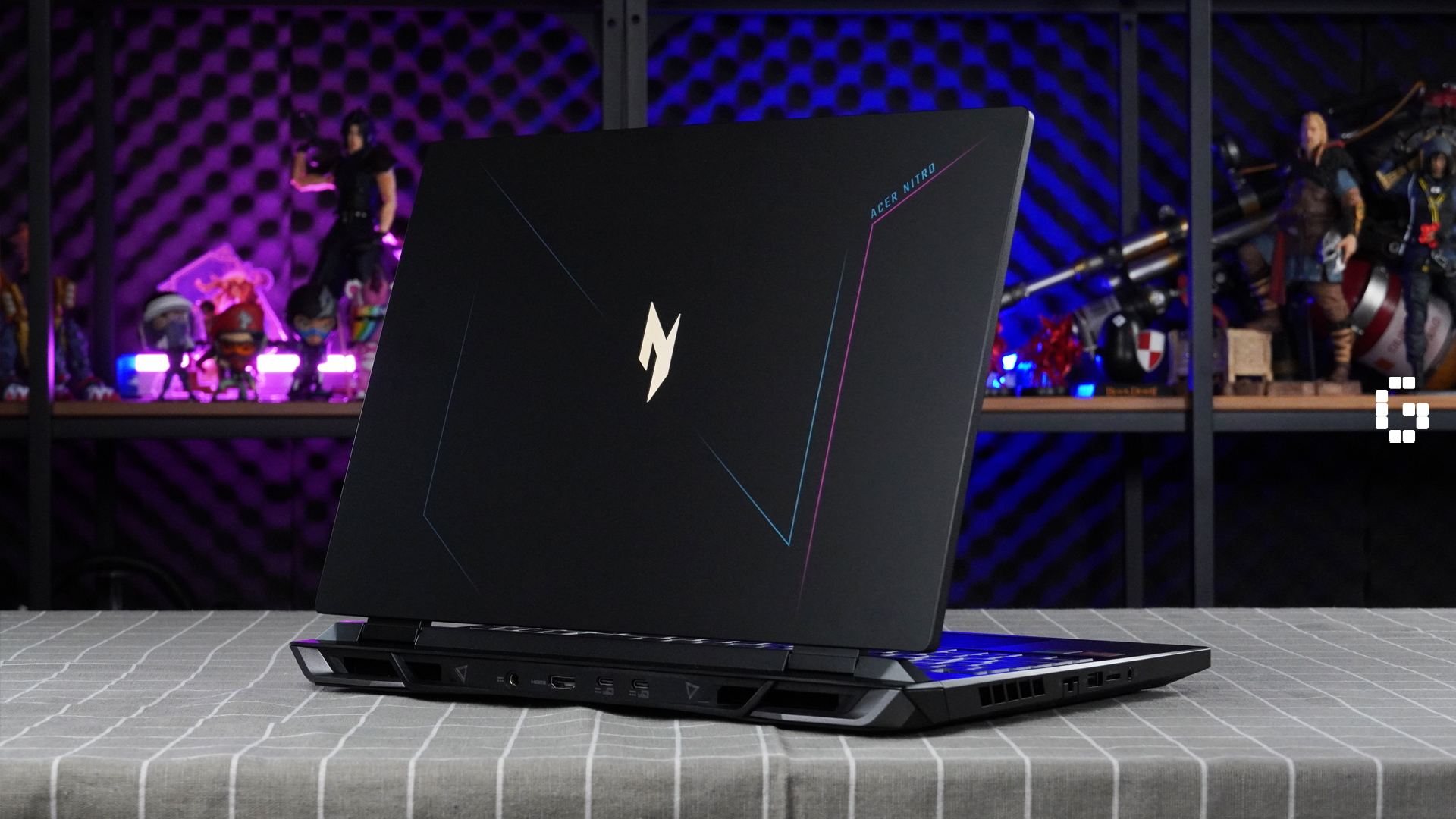 A few thin pink and blue stripes on the back of the case complements pretty well with the RGB keyboard lighting, giving bits of contrast and additional colours to the surrounding area.
A few thin pink and blue stripes on the back of the case complements pretty well with the RGB keyboard lighting, giving bits of contrast and additional colours to the surrounding area.
The lid of the Nitro 16 has been updated with an eye-catching graphic of the letter “N” (for Nitro), which is also present on the bottom screen bezel. In regards to the Nitro logo, I’m glad that Acer is going out of their comfort zone by introducing a brand new design choice. However, at a first glance, I initially didn’t understand what it meant because it didn’t immediately resemble the letter “N”. But that’s just a minor personal gripe.
 The Nitro 16 dimensions are 360.1 (W) x 279.9 (D) x 25.9 (H) mm and weighs at 2.7kg. There are plenty of expensive laptops in the market that don’t have USB 4 ports included, given that the Nitro 16 has one for an entry-level gaming laptop is quite the feat.
The Nitro 16 dimensions are 360.1 (W) x 279.9 (D) x 25.9 (H) mm and weighs at 2.7kg. There are plenty of expensive laptops in the market that don’t have USB 4 ports included, given that the Nitro 16 has one for an entry-level gaming laptop is quite the feat.
Regarding the ports, the left side hosts a Gigabit ethernet, USB 2.0 (USB-A), Memory card reader (MicroSD), audio jack combo while the right side has 2 USB 3.2 Gen 2 (USB-A) and a slot for a cable lock. The rear consists of the Power socket port, HDMI 2.1, USB 4 (USB-C; Power Delivery, DisplayPort), and a USB 3.2 Gen 2 (USB-C; Power Delivery, DisplayPort). The Nitro 16 also include built-in Bluetooth 5.2 wireless and Wi-Fi 6E.
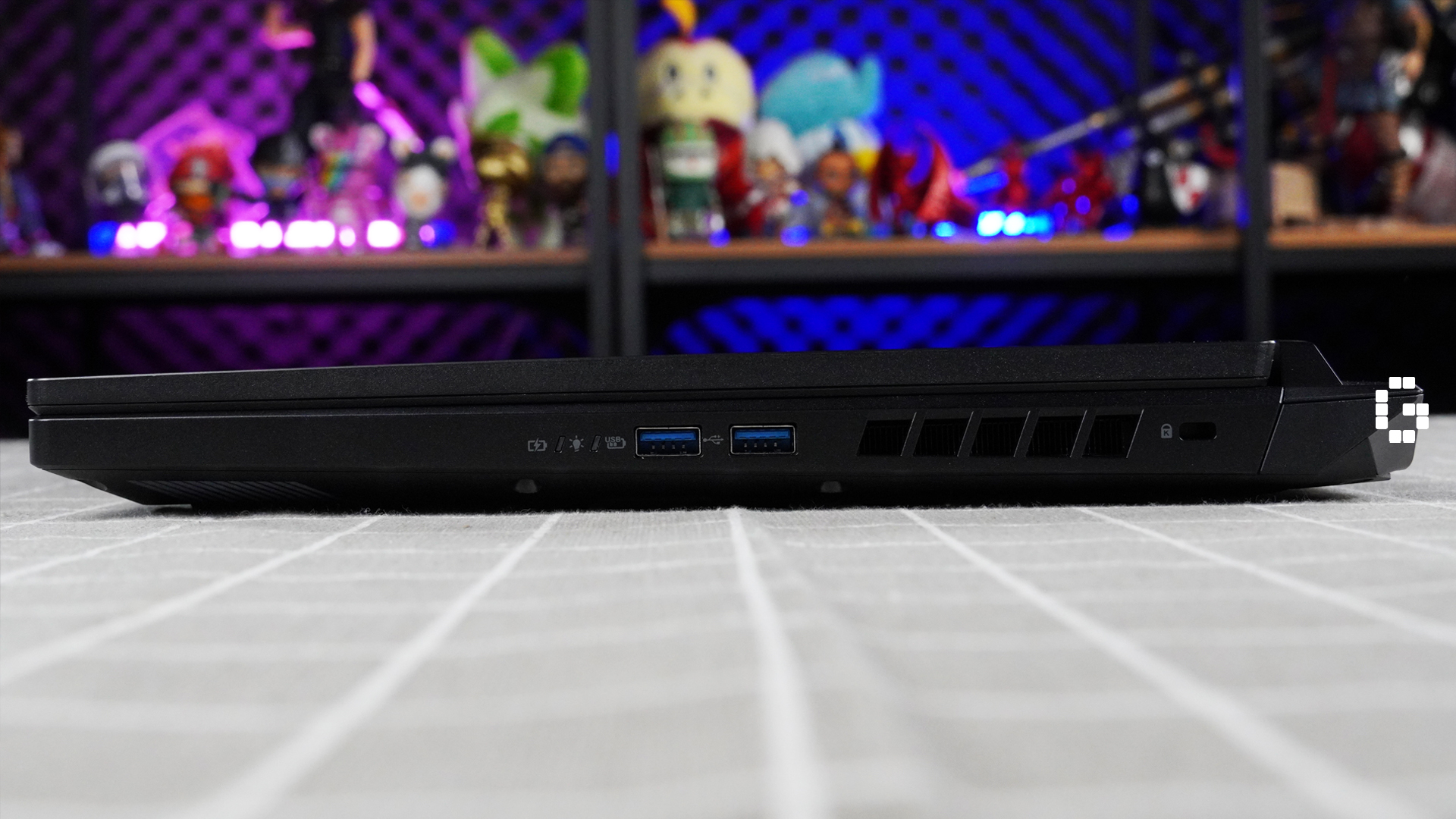
Keyboard and Touchpad
This entry-level gaming laptop comes with a backlit chiclet keyboard from Acer that has four-zone RGB backlit lighting along with a numerical keypad. Visual emphasis is placed on the WASD and arrow keys, and the well-known gaming focused font from Acer stands out against the black keycaps with its white key symbols.
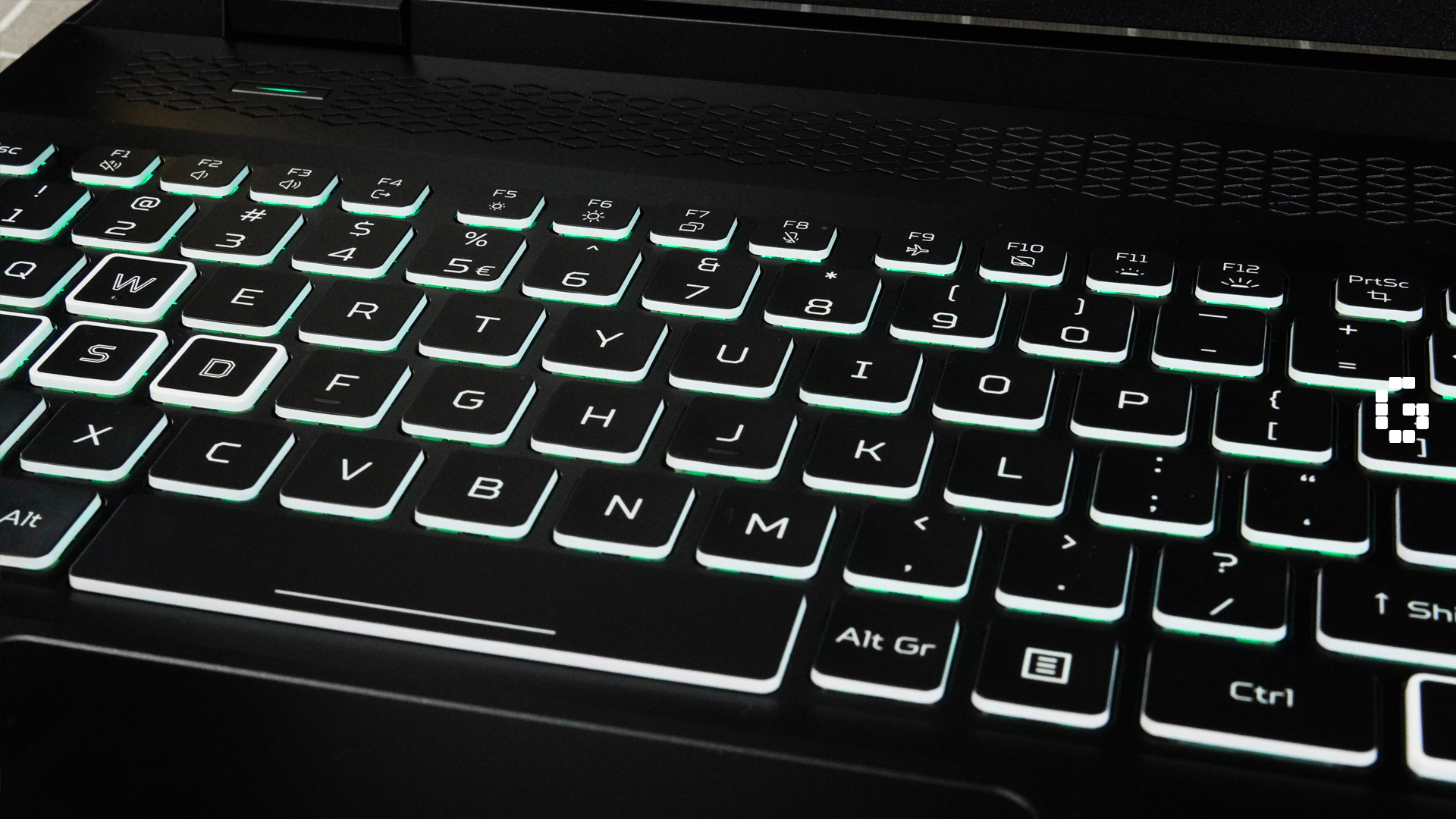 The backlighting is clearly visible during the day, and I personally appreciate that Acer gave the WASD keys an especially thick border to make it stand out. Each key has a short travel distance and a distinct pressure point, which is good for typing.
The backlighting is clearly visible during the day, and I personally appreciate that Acer gave the WASD keys an especially thick border to make it stand out. Each key has a short travel distance and a distinct pressure point, which is good for typing.
However, the lack of tactile feel is rather disappointing as pressing these keys down doesn’t feel like much on a gaming laptop. The keyboard deck, at least, doesn’t flex much.
 Using smaller keys, Acer barely managed to fit the number pad inside. Unfortunately, that also means that the “0” key and right Shift keys are smaller, due to the full-size arrow keys not being separated.
Using smaller keys, Acer barely managed to fit the number pad inside. Unfortunately, that also means that the “0” key and right Shift keys are smaller, due to the full-size arrow keys not being separated.
Near the number pad are useful media playback controls, and the power button is located at the top right corner of the number pad. There’s also a button that specifically opens up the Nitro Sense app.
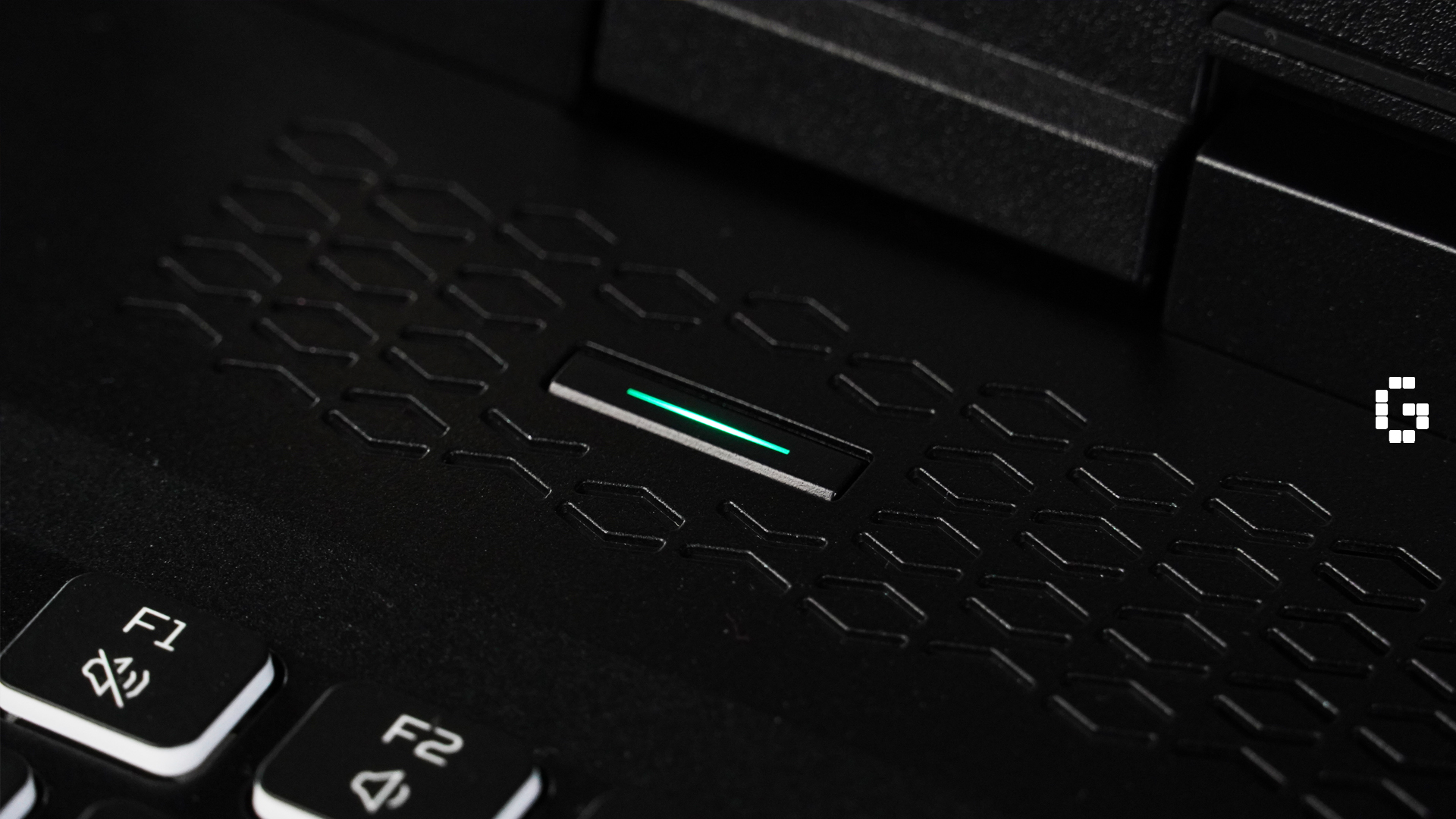 All in all, Acer produced a keyboard that’s suitable for daily use. On the other hand, the Nitro 16’s multitouch touchpad functions well, providing lots of room and discrete physical clicks that provide a pleasant input experience with its smooth surface and distinct pressure point.
All in all, Acer produced a keyboard that’s suitable for daily use. On the other hand, the Nitro 16’s multitouch touchpad functions well, providing lots of room and discrete physical clicks that provide a pleasant input experience with its smooth surface and distinct pressure point.
Display
The Nitro 16 we tested out had a 16-inch, 2560×1600 screen. It’s vivid, bright picture easily ranks among this laptop’s best qualities, even rivaling most devices that have a higher price range. Additionally, the surface is anti-glare and helps eliminate reflections, which is a nice bonus.
 I enjoyed putting everything I could see on the Nitro 16’s screen. Watching through videos, I was able to appreciate the vibrant colours the screen was able to produce, on top of the strong contrast which made scenes feel especially immersive. I hardly noticed the black bars running along the top and bottom edges because the black levels were so deep.
I enjoyed putting everything I could see on the Nitro 16’s screen. Watching through videos, I was able to appreciate the vibrant colours the screen was able to produce, on top of the strong contrast which made scenes feel especially immersive. I hardly noticed the black bars running along the top and bottom edges because the black levels were so deep.
Thanks to the screen’s 165Hz refresh rates, and 3 ms response time rating, I experienced no ghosting or frame tearing while gaming. I didn’t experience any input lag either, considering how this laptop has Nvidia Advanced Optimus, which allows it to seamlessly switch to the Nvidia GPU when gaming and to integrated graphics for less demanding tasks.
 I was also overall satisfied with the panel’s brightness and contrast. The display’s brightness in particular is worth highlighting.
I was also overall satisfied with the panel’s brightness and contrast. The display’s brightness in particular is worth highlighting.
The Nitro 16’s display has the best colour coverage and brightness of the bunch. It has an excellent 91% DCI-P3 gamut coverage. From any position, the IPS panel can be watched and has stable viewing angles. Considering the display’s high brightness, it can even be watched when you’re out and about, working outdoors.
Productivity Performance
This review unit of the Acer Nitro 16 has an AMD Ryzen 9 7940HS processor, an NVIDIA GeForce RTX 4070 8GB GDDR6, 32 GB DDR5 5600MHz, and a 1TB PCIe NVMe Gen4 SSD. Looking at these specs, this should have sufficient performances for daily use.
The Benchmark test results are as follows:
Cinebench R23
Multi-core: 12834
 Single-core: 1747
Single-core: 1747
PCMark 10: 7648

3DMark
Time Spy: 11774
 Fire Strike: 25370
Fire Strike: 25370

Gaming and Graphics
The Nitro 16 is designed for 2K gaming at high to maximum settings. Below, I tested out the laptop with three graphically intensive games at their highest setting at 2K resolution with ray tracing and DLSS on. Overall, the Ryzen 9 7940HS and RTX 4070 8GB offers a great gaming experience that will allow you to play a lot of modern titles at high to max settings.
Like a Dragon: Ishin (Average: 165 FPS)
 Running on every single setting set to the highest at 2560 x 1600, including NVIDIA DLSS set to Ultra Quality, Like A Dragon: Ishin barely had any frame drops, with it constantly being at 165 FPS for almost all the time, even during combat. It only dropped to 150~ FPS when there were a lot of character models loading in.
Running on every single setting set to the highest at 2560 x 1600, including NVIDIA DLSS set to Ultra Quality, Like A Dragon: Ishin barely had any frame drops, with it constantly being at 165 FPS for almost all the time, even during combat. It only dropped to 150~ FPS when there were a lot of character models loading in.
Armored Core IV: Fires of Rubicon (Average: 78 FPS)
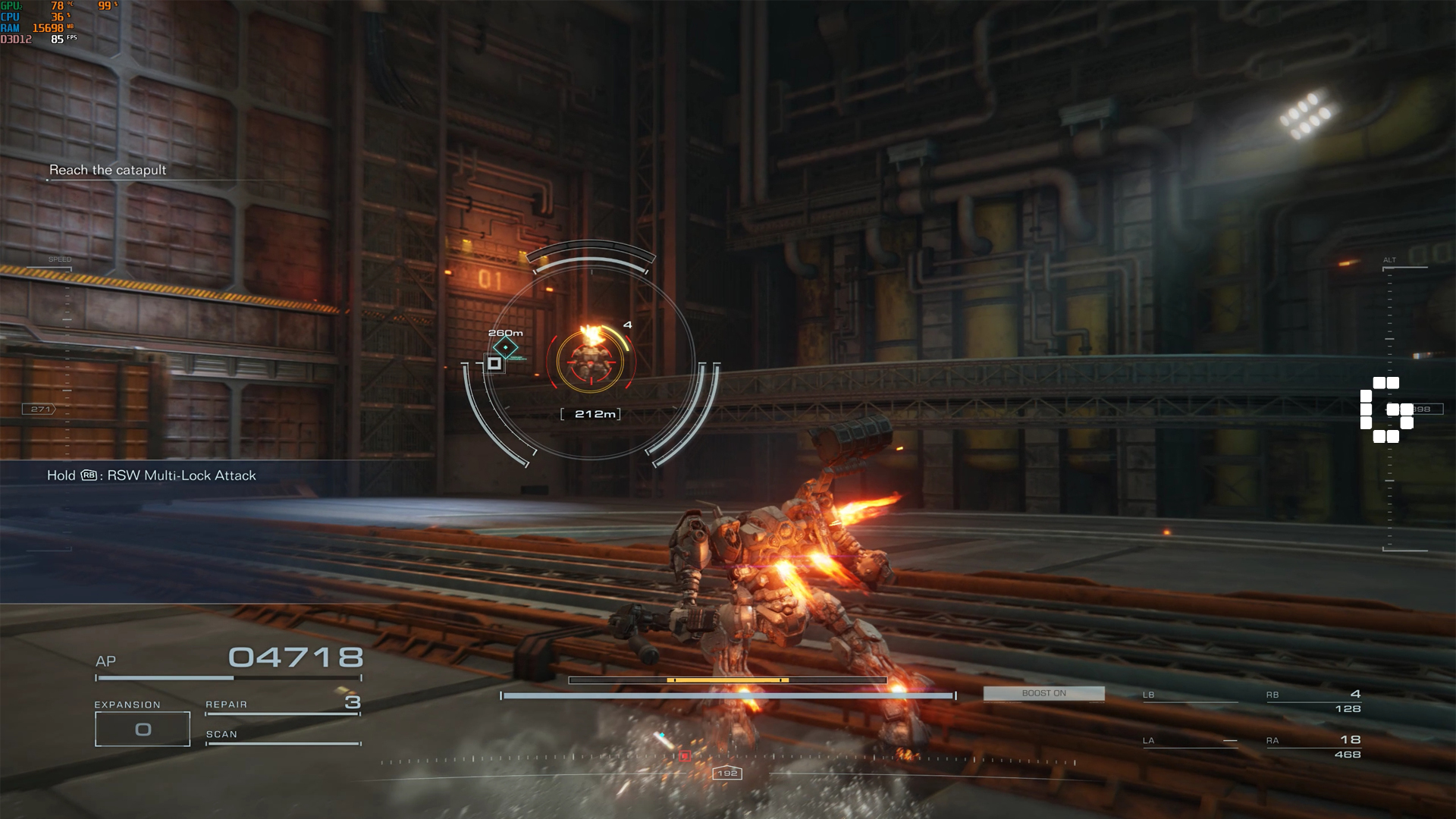 Running on the maximum setting at 2560 x 1600, with Ray Tracing Quality that is also set to Maximum, Armored Core IV: Fires of Rubicon averages around 78 FPS during gameplay and can drop down to 69~ FPS when there were lots of enemy units or visual effects on screen. However, the frame drops aren’t noticeable at all and there were no stutters whatsoever.
Running on the maximum setting at 2560 x 1600, with Ray Tracing Quality that is also set to Maximum, Armored Core IV: Fires of Rubicon averages around 78 FPS during gameplay and can drop down to 69~ FPS when there were lots of enemy units or visual effects on screen. However, the frame drops aren’t noticeable at all and there were no stutters whatsoever.
Starfield (Average: 47 FPS)
 Running on the Ultra Graphics preset at 2560 x 1600, with upscaling set to FSR2, Starfield is a bit rough even with the Ryzen 9 7940HS and RTX 4070 8GB. The game runs around at 60 FPS while indoors, but it starts to dip significantly and becomes unstable while outdoors. At times, it can drop down to 35~ FPS, especially during combat and out of combat it’ll go back up to around 47~ FPS.
Running on the Ultra Graphics preset at 2560 x 1600, with upscaling set to FSR2, Starfield is a bit rough even with the Ryzen 9 7940HS and RTX 4070 8GB. The game runs around at 60 FPS while indoors, but it starts to dip significantly and becomes unstable while outdoors. At times, it can drop down to 35~ FPS, especially during combat and out of combat it’ll go back up to around 47~ FPS.
It is recommended to lower the settings to High if you want a more enjoyable experience, with FPS averaging around ~67FPS indoors and ~51FPS outdoors.
Audio
Although the stereo speakers produce passable audio, the bass is mostly absent. External speakers or headphones can be connected for a better audio experience.
The Nitro 16’s internal speakers are not among its advantages. While listening to music, I noticed that there were almost no bass, and even turning on the Bass Booster feature or the other EQ presets in the DTS:X Ultra app didn’t help.
Battery Life/ Thermals
The laptop comes equipped with 90 Wh of Lithium Ion (Li-Ion), and considering how battery life is always a major issue with many gaming laptops, we did some tests to see how the Nitro 16 fares.
Our battery life test consists of web browsing, video streaming, and opening a bunch of apps at 50% brightness. Surprisingly, the Nitro 16 lasted an impressive 7-8 hours, in other words a full day of work.
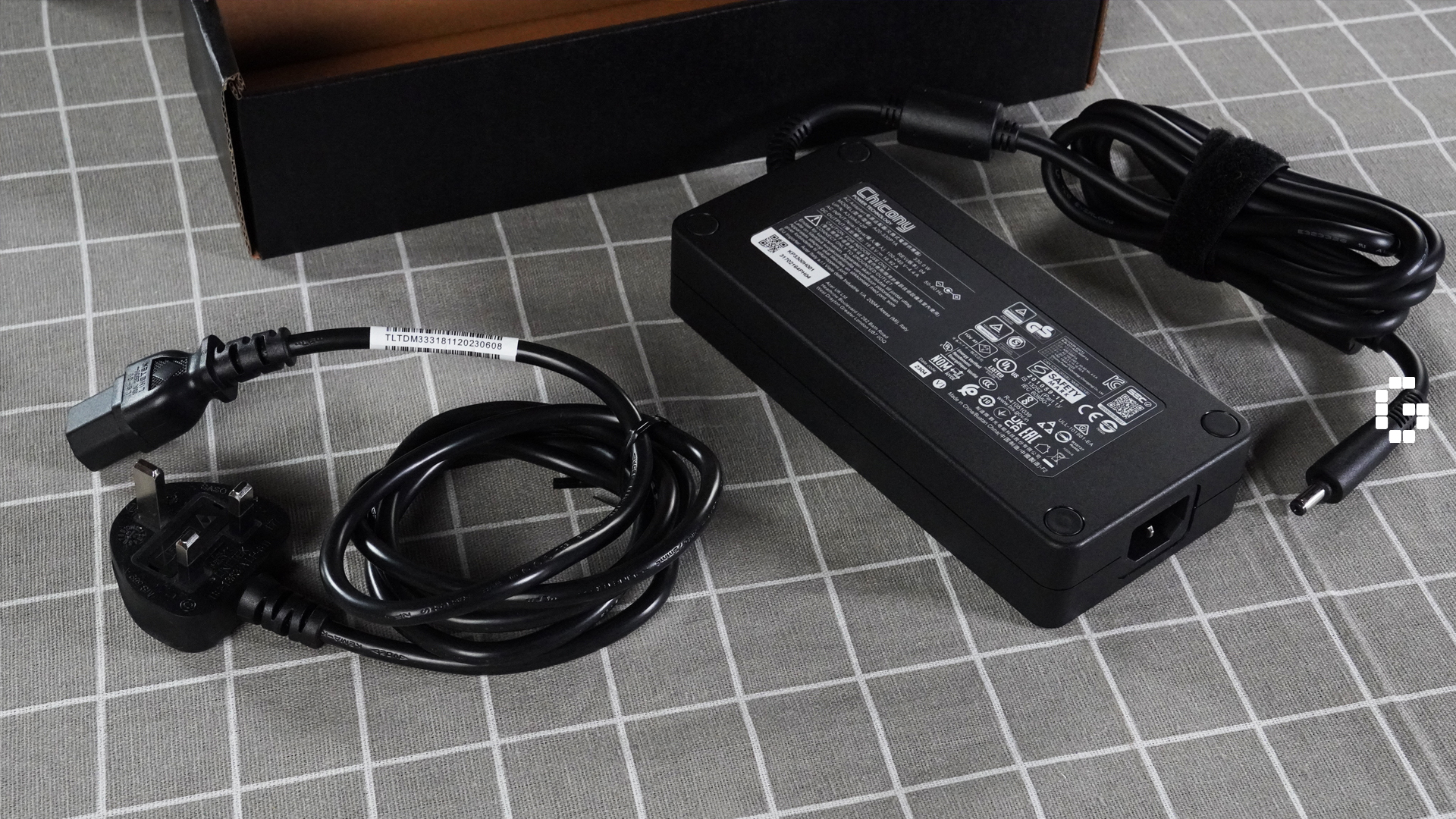 Another positive that the Nitro 16 had was that the laptop could be charged via the USB-C adapter; both USB-C ports support Power Delivery, meaning that you don’t always need to have the hefty, proprietary PSU nearby.
Another positive that the Nitro 16 had was that the laptop could be charged via the USB-C adapter; both USB-C ports support Power Delivery, meaning that you don’t always need to have the hefty, proprietary PSU nearby.
Regarding heat, the center of the Nitro 16’s keyboard reached warm temperatures during intense gaming sessions, but it was cooler one the touchpad. The real heat was on the bottom of the laptop and towards the back center, around the heat exhaust vents.
Using this laptop on a solid surface while gaming will be important for airflow. Overall, heat dissipation is acceptable. The laptop gets noticeably warm under load but overall, only moderately. The temperatures continue to be in the safe range when in use. The fans ramp up quickly while gaming, but I was pleasantly surprised at how quite the fans were.
In general, the computer operates quietly and occasionally silently when in regular use. The performance differences between the modes are relatively modest. In order to guarantee gaming at moderate to low noise levels, “Balanced” and “Quiet” mode are used.
Verdict
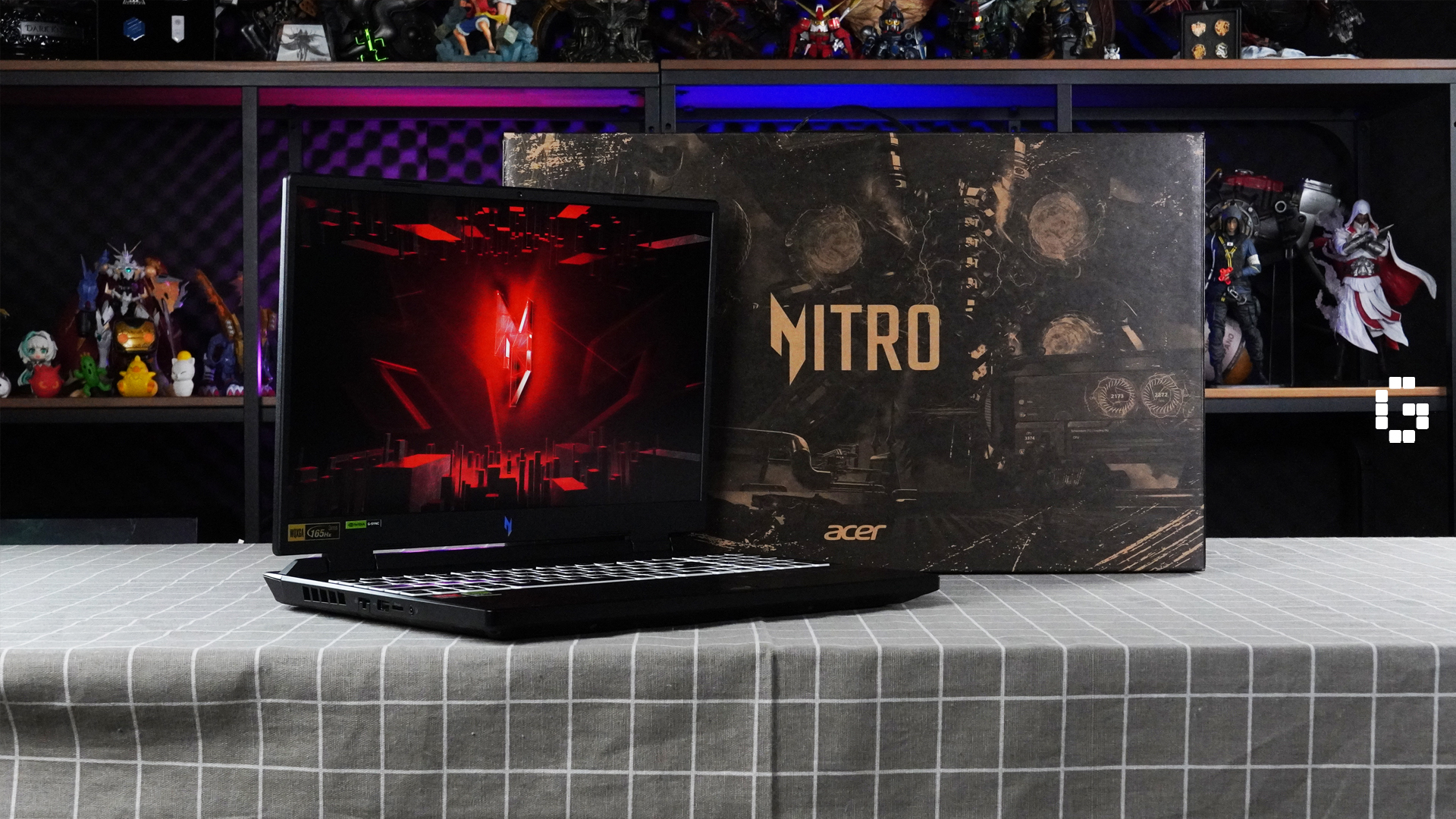 The Acer Nitro 16 is easily one of the best budgeted gaming laptops in the market, offering plenty of performance. Its AMD Ryzen 5 CPU and Nvidia GeForce RTX 4050 are a potent combo, and games really come to life on its bright 1920 x 1200, 165 Hz screen.
The Acer Nitro 16 is easily one of the best budgeted gaming laptops in the market, offering plenty of performance. Its AMD Ryzen 5 CPU and Nvidia GeForce RTX 4050 are a potent combo, and games really come to life on its bright 1920 x 1200, 165 Hz screen.
The Nitro 16 also doesn’t miss out on creature comforts with its four zone RGB keyboard, loads of ports, and long battery life. It only falls short on certain areas, namely with its speakers but it’s definitely not a deal breaker in the grand scheme of things.











![[SEA Exclusive] From Shadows to Shipwrecks – Jennifer English Talks About Bringing Emotional Depth to Clair Obscur: Expedition 33](https://cdn.gamerbraves.com/2025/04/Clair-Obscur-Jennifer-English_Interview_FI-360x180.jpg)

![[EXCLUSIVE] Do the Game Interview – An Intimate Look at the Challenges of Game Development](https://cdn.gamerbraves.com/2025/04/Do-the-Game_Interview_FI-1-360x180.jpg)
![[EXCLUSIVE] Interview with the Minds Behind of Den of Wolves – 10 Chambers’ New Sci-Fi Heist FPS](https://cdn.gamerbraves.com/2025/04/Den-of-Wolves_Interview_FI-360x180.jpg)









![[GUIDE] Finding Alma’s Lost Glasses in The Apple of Her Eye Side Quest](https://cdn.gamerbraves.com/2025/04/Alma-Glasses-Quest_Gudie_FI-360x180.jpg)



![[GUIDE] Farming Nightflower Pollen in Monster Hunter Wilds](https://cdn.gamerbraves.com/2025/03/MHWilds-Pollen_Guide_FI-360x180.jpg)
